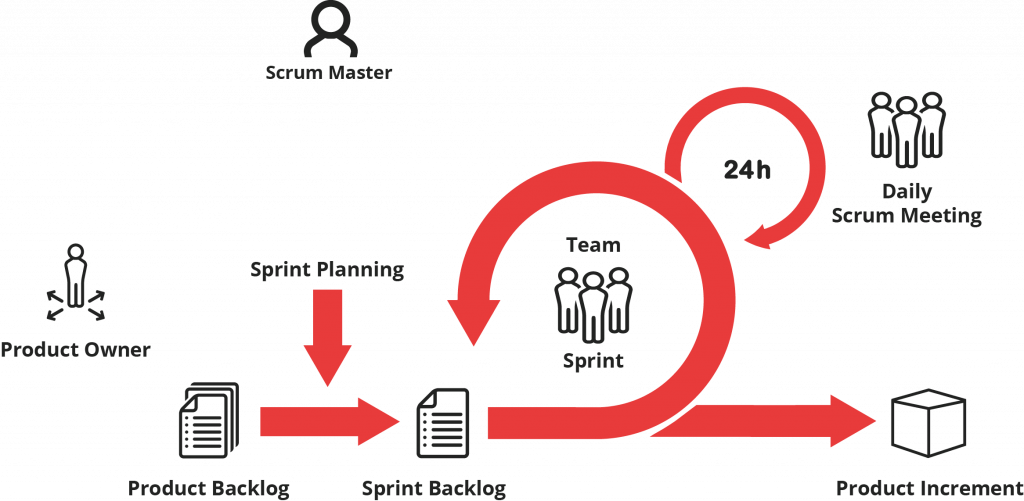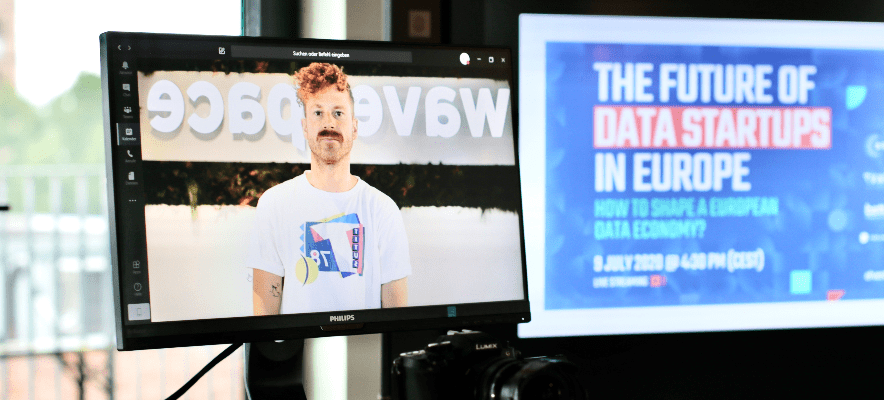#DIGITALLEARNING 2 – Agile working with Scrum
26. January 2018
Knowledge is power – especially when it comes to digitization. That’s why we regularly present our readers with the #DIGITALLEARNING blog series, providing them with methods, tools and know-how about digitization and innovation. In the first part we showed why agile work in teams and organisations is becoming more and more important. In today’s article, the best-known method of agile working – Scrum – is scrutinized.
Scrum is a framework for the management and execution of projects in software development. It is based on the values and principles of agile working and on the assumption that it makes sense to divide an extensive task into several small work packages. In software development with Scrum, a project is divided into so-called increments instead of being processed as a whole. Tasks are prioritized according to their importance.
The Scrum Framework provides three framework conditions: Events, roles and artifacts.

Events within the Scrum framework
- Sprint planning: The sprint planning takes about half a day and helps to decide which tasks will be processed in the coming sprint. Tasks are prioritized and the availability of individual team members is communicated.
- Sprint: The heart of the Scrum Framework are the sprints, i. e. the individual development cycles, whose aim is to supply a partial product (increment). A sprint can take between one and four weeks. Meanwhile, no changes may be made that could affect the sprint target.
- Daily Scrum Meeting: A daily meeting is held to exchange information within the development team. The team discusses the progress since the last meeting and assesses the tasks until the next meeting. Typically, the team meeting takes place in a standing position and is strictly limited in time.
- Sprint Review & Retro: At the end of a sprint, the team draws a target/actual comparison in the review. Not only the product result is important, but also team performance. The team gives each other feedback and discusses what went well and what can be improved. This results in measures for the next sprint.
Roles within a Scrum Team
- The Product Owner is the sole contact person for all product-specific topics. He defines the “what” of the project, i. e. sets the technical requirements (features), defines goals and prioritizes them.
- The Scrum Master takes care of the “how”. As a methods expert, he ensures that the team adheres to the Scrum rules, organizes meetings and optimizes team collaboration.
- The development team processes the subtasks and delivers a finished increment at the end of a sprint. It also selects the amount of work for the next sprint. It organizes its work independently and autonomously.
Artifacts within the Scrum framework
- Product Backlog: The Product Backlog lists all features and functionalities of the product to be developed according to priority. These cannot be modified during a sprint. After a completed sprint, however, the product owner can introduce improvements and bug fixes for future sprints and reprioritize requirements. The entire team has an insight into the product backlog.
- Sprint Backlog: The Sprint Backlog contains the individual work packages into which the project is divided. Here the tasks from the product backlog are stored, which have to be done in order to reach the respective sprint goal. As with the catalogue of requirements, these tasks may not be changed after the start of the sprint.
- Product Increment: During the sprint, the team works concentrated and without interference from outside to convert the tasks from the sprint backlog into a fully finished and potentially productively usable application part. This application part is the target of the sprint and is called Product Increment.
Advantages of the agile method Scrum
As with agile methods, Scrum is easy to learn and can be used quickly. Within the typical framework, roles and responsibilities are clearly defined. By dividing the project into small work packages, the development process is well structured, clear and at the same time flexible. The daily meetings ensure effective communication that facilitates the flow of knowledge within the team.
Product development in the Scrum Framework is an agile, iterative process. This means that at the end of a sprint, the functionality of the product package is presented live to interested participants, users or test customers. Your feedback and the new requirements of the product owner are then incorporated into the sprint planning of the next sprint. The process starts anew, so that the product is developed iteratively and user-centered. Although Scrum was originally an invention of software development, the method has now become established in other areas such as automotive development.





* Required field